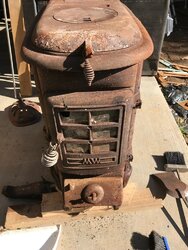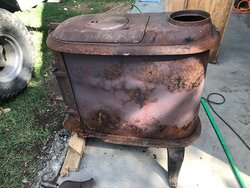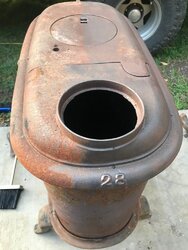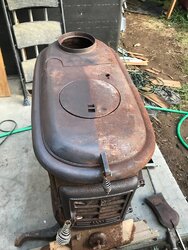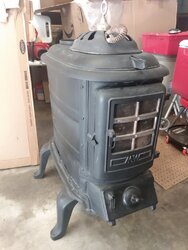The bulk of the heat this thing is going to provide is going to be from radiation and natural convection from the appliance itself, not the flue pipe. Straight up through the roof is cheaper, more efficient, and easier to keep clean. The single-wall stove pipe you can run from the flue collar to the ceiling support box will give off some (minimal) additional heat. As soon as you penetrate the structure (either straight up or out and up), you must use Class A chimney components (including whatever you choose for penetrating the ceiling/roof, or wall), which are a good deal more expensive than single-wall stove pipe. Ideally ($$$-wise), you'd route the flue to minimize the Class A requirements, and that almost invariably means straight up is your best bang for the buck. Whatever heat you might think you're gaining by having lots of stovepipe wandering around inside will be more than offset by the cost of a lot of Class A chimney to go up outside the wall and the nightmare of trying to keep that thing clean and safe to operate. Rick
Hey guys, sorry to resurrect such an old thread, but I also have the same stove and this is the only place on the entire internet I've found mention of it or an image of it.
I've attached pictures of my stove that I am restoring, and I'm learning a lot just going through the thread on this site, great stuff!
I have a few follow up questions. (I'll be using this stove to heat a cabin in the woods)
For the inside, this seems to have basic 10 gauge steel for the sides and cast iron for the top and bottom.
I was looking at solutions for this (Since I don't know how it was originally configured) and instead of double lining it and putting KAO Wool between the steel sheets, or installing fire brick I think I'm going to line it with refractory cement. I'm thinking 1/4"-1/2" of cement lining the sides should be ok, but with all the discussions of heat radiation on wood stoves I'm reading, I'm wondering if lining this with refractory cement will screw up my heat radiation, or if it'll be ok.
There is a door in the front bottom for removing ash and allowing air flow into it, so I'm going to forge a steel grate for the bottom to keep the coals off the cast iron bottom and give me a void I can shovel from. I assume it had something like this before.
From the pictures, does anybody know if this stove is missing a bottom front shelf? In all the similar wood stoves I've seen they have a little shelf this one doesn't seem to have.


